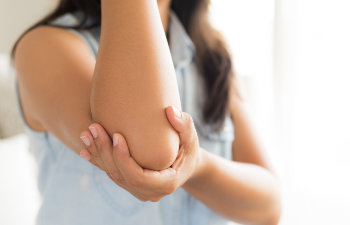
You may have heard of professional athletes receiving specialized regenerative injections to speed their recovery after joint injuries. What you may not realize is that these types of injections are not just for pro athletes or the rich and famous – anyone can access advanced options in regenerative medicine. Platelet-rich plasma (PRP) has been used for decades in elite medical procedures, but now it is available for anyone who wants to explore advanced joint treatments. If you have certain types of joint pain or injuries, you may be a good candidate for PRP injections.
What Is In PRP Injections?
Blood is mostly made of water, but it contains some valuable components for healing your body. When you filter out these valuable components and concentrate them into a plasma, they can be reintroduced to damaged tissues. PRP is derived from blood that is sent through a centrifuge, filtering out the platelets that trigger growth factors and proteins to be released to hasten tissue regeneration.
PRP injections are one of the safest joint treatments available. The plasma is derived from the patient’s blood, which means there is no risk of allergic or other adverse reactions. At FullRange Spine & Ortho, we have centrifuges on-site and we can create PRP from a small sample of a patient’s blood in about 15 minutes.
What Joint Conditions Can Be Treated With PRP?
PRP injections can help relieve pain and inflammation from many joint conditions. While PRP injections do not contain a pain reliever or local anesthetic, they can address the underlying issues that cause joint pain. The growth factors and proteins that are released with PRP can help reduce inflammation, increase joint lubrication, impact pain receptors, and stimulate tissue repair. PRP injections may be recommended for the following joint conditions:
- Osteoarthritis
- Injuries or damage to tendons, ligaments, or cartilage
- Strains or sprains
- Tendonitis
- Repetitive joint injuries (golfer or tennis elbow)
- Degenerative joint disease
Almost any joint can be treated with PRP injections, but the shoulder, knee, and elbow are amongst the most common to receive this treatment.
What to Expect After PRP Injections
PRP injections do not provide immediate joint pain relief, but most patients notice a significant difference in the weeks and months following PRP injections. The joint may be sore for a day or more after the injection, but most patients begin noticing reduced pain and improved function within the first month. Most patients benefit from a series of injections for chronic conditions like osteoarthritis and cartilage damage.
There have been many studies that have proven the effectiveness of PRP injections for many types of joint conditions. If you have a joint injury or chronic pain condition, PRP treatment may be an excellent option for pain relief and healing. To learn more about joint PRP injections, contact our team at FullRange Spine & Ortho. Call one of our clinics in the Los Angeles, CA metro area to schedule your consultation with one of our orthopedic and sports medicine specialists.
Posted on behalf of FullRange Spine & Ortho